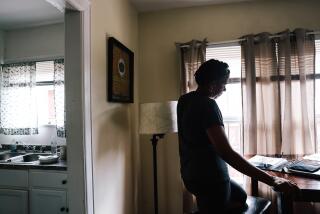Rosalind Franklin, ‘scientist, spinster’ and genius, gets doodle nod
Thursday’s Google Doodle honors Rosalind Franklin, the pioneering scientist famous for taking some of the first and best images of DNA in the early 1950s, and for being screwed over by the sexism of her time.
Just 37 years old when she died of ovarian cancer in 1958, Franklin would have celebrated her 93rd birthday Thursday.
Franklin was born in 1920 to a well-off Jewish family and decided to pursue science when she was just 16.
Photos: Google Doodles of 2013
She got her undergraduate degree and doctorate in physical chemistry at Cambridge, where her work focused on the nature of coal and charcoal and how to use them most effectively. (It was wartime, after all). After completing her degree in 1945, she found work at a lab in Paris, where she showed a talent for analyzing carbons using X-ray diffraction analysis.
Though she loved her life in Paris, she felt she could not have a serious science career unless she moved back to England. In 1951 she took a job in John Randall’s lab at Kings College in London as part of a team that was studying the living cell. She was assigned to use her X-ray diffraction expertise to image DNA.
Within six months of arriving at the lab, she developed an antagonistic relationship with Randall’s second in command, Maurice Wilkins. Some say that Wilkins treated Franklin like a research assistant because she was a woman. Others contend that he assumed they would work together to use X-ray diffraction to image DNA, while Franklin thought the project was hers alone.
Regardless, there was a personality clash and the two were barely on speaking terms.
During her time at Randall’s lab, Franklin was not just taking images of DNA, but also working to understand its structure. At the same time, Francis Crick and James Watson were constructing their theoretical model of DNA at the Cavendish lab at Cambridge.
In 1953, Wilkins showed Watson and Crick some of Franklin’s unpublished research without her knowledge or permission -- including the infamous Photo 51, taken by Franklin’s graduate student, that showed the diffraction pattern of DNA. (Photo 51, is the “X” shaped figure at the end of Thursday’s doodle).
Seeing this image reportedly helped Crick and Watson fill in the holes in their model, and a few months later, they became the first scientists to describe the structure of DNA in a paper in Nature. Years later, when they were awarded the Nobel Prize with Wilkins for their work on DNA structure, they still did not mention Franklin’s contribution.
But in 1953, Franklin was already on her way out of Randall’s lab -- in part because of the lack of respect for women at King’s College. At the time, female scientists were forbidden from taking their meals in the main dining room, where the male scientists ate.
Franklin moved to a lab at Birkbeck College in London, where she did work on plant viruses and became recognized as one of the world’s experts on virus structure. (Randall asked that she discontinue her DNA research after she left his lab.) She also continued to publish papers about the structure of coal.
In 1956, while on a trip to America, Franklin discovered she had ovarian cancer. For the next 18 months she continued to work during periods of remission, but she eventually died April 16, 1958.
According to biographer Brenda Maddox, Franklin’s death certificate read: “A Research Scientist, Spinster, Daughter of Ellis Arthur Franklin, a Banker.”







